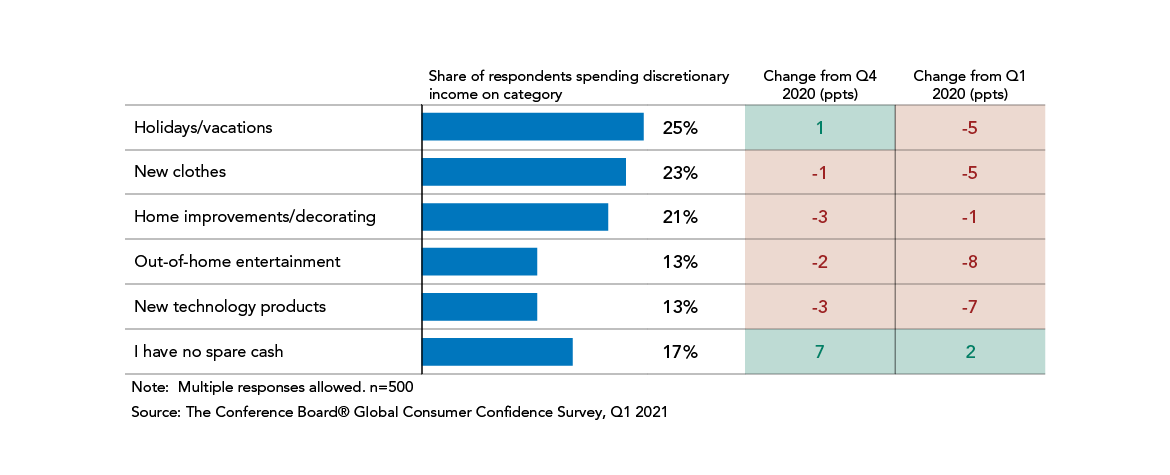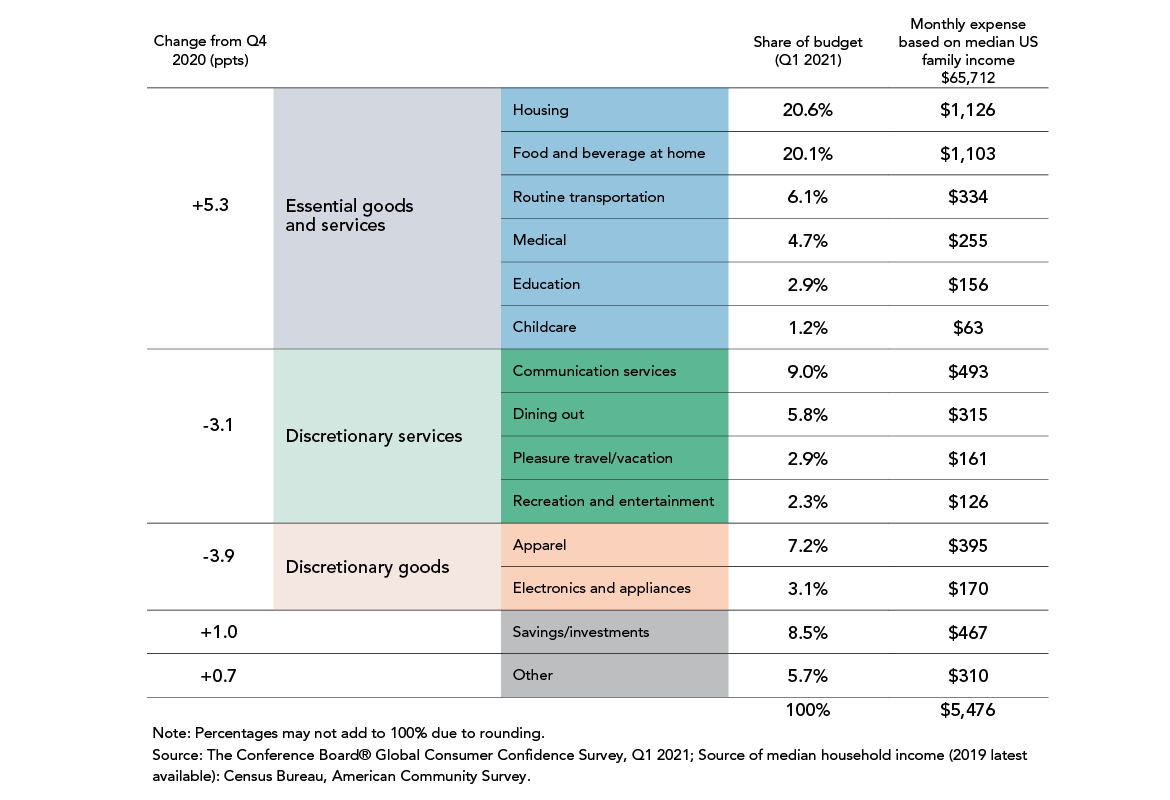
May 11, 2021 | Report
Discretionary spending on in-person services should rise in Q2 and beyond. And not just services—as people reemerge into public life, they may also buy more of the discretionary products they’ve forgone over the past year, such as new clothes. Pent-up demand for travel, hospitality, and entertainment services and higher costs for raw materials mean consumer prices will likely rise. Food is also more expensive, and consumers’ increasing time spent out of the home may reduce their ordering of take-out food, which grew over the course of the pandemic. While snacking may continue, people may also favor more health-conscious choices.
For specific insights into consumers’ savings, investment, and related behavior, see the companion piece, Category Insights: Financial Services
Caution in early Q1 2021 gave way to a surge in spending by the end of the quarter. In our Q12021 survey, conducted in February 2021, US consumers showed less financial security than in the prior quarter and prior year: more lacked the necessary funds for discretionary spending.
Plus, the share of US consumers cutting back on expenses jumped to 62 percent—13 percentage points (ppts) above prior-year levels, showing how needed the latest stimulus package was. Spending on discretionary categories was down, except for travel. Frugality-focused consumers saved on categories across the board, even on pandemic necessities such as groceries and utilities. However, US retail sales for Q1 were up 13.7 percent year-over-year, indicating a recent boost in consumers’ spending mood.

The way consumers allocate their budget is bouncing back to more typical levels. The share of spending on essentials (housing, food, transportation) rose, while the share spent on discretionary products dropped, both going back to more typical levels. At the time of the survey, US consumers’ relative spending on discretionary services was still declining due to continued business closures, virus spread, and spells of bad weather. In contrast, the budget share consumers put into savings/investments rose further. However, March sales from food services and drinking places were up 28.2 percent over February, spurred by business reopenings and increasing vaccination rates, signaling positive prospects for the services sector.

